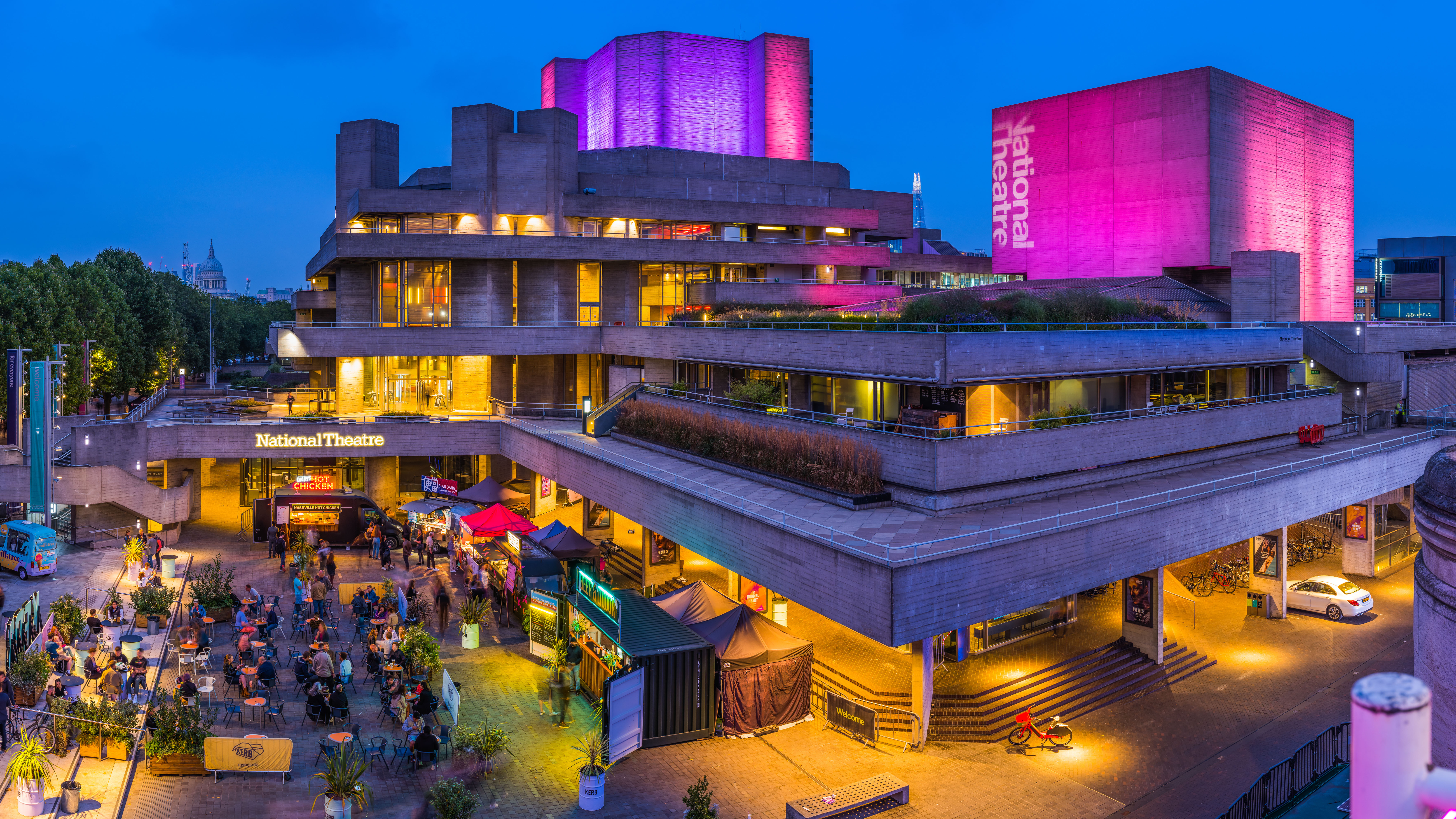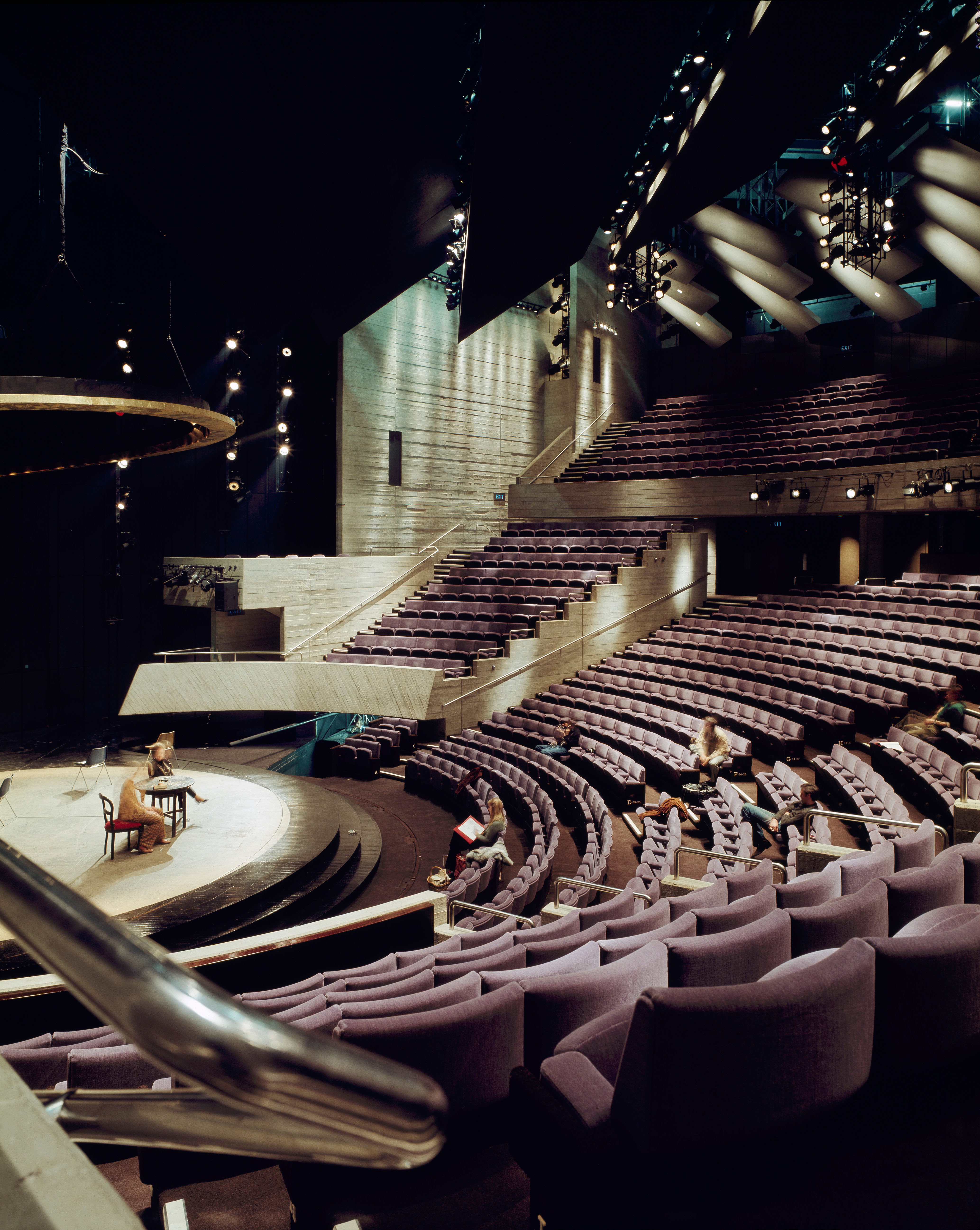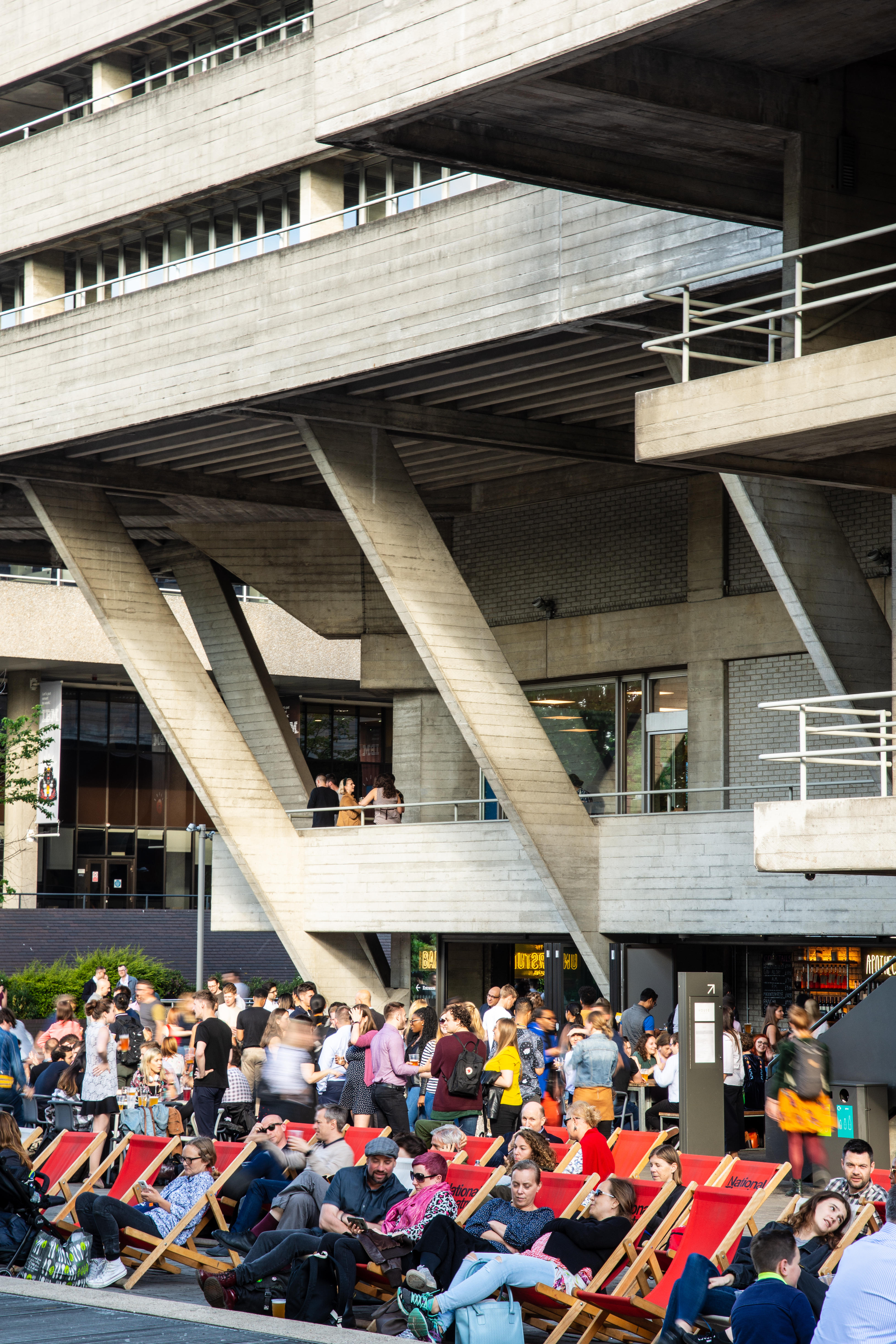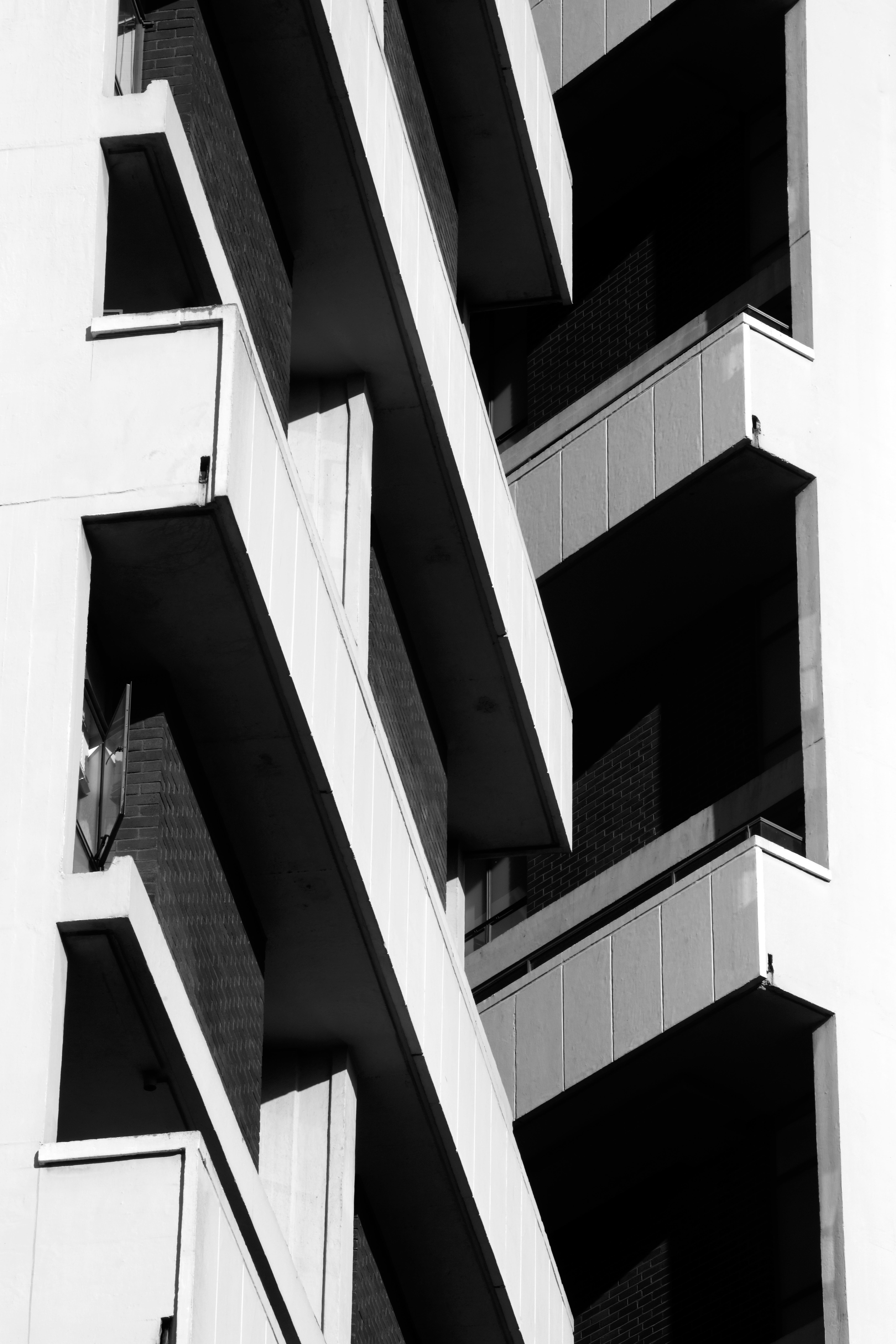Sir Denys Lasdun: The brains behind the building branded 'a clever way of building a nuclear power station in the middle of London’ by The King
John Betjeman admired Sir Denys Lasdun’s work, but The King disliked it, and opinion remains divided to this day. Either way, the man who viewed ‘buildings as landscape’ has left an indelible mark on London.


Peeking from the plane trees that line the South Bank, the National Theatre looks like an angular cliff line, its twin fly-towers lording it over the ziggurat of terraces that wrap the building.
Dwarfed by a proliferation of glass-and-steel high-rises, it looks almost fragile and it’s hard to believe this project once drew the ire of The King. In a late-1980s documentary, the then Prince Charles said the National Theatre was ‘a clever way of building a nuclear power station in the middle of London’. For others, however, the theatre — now listed Grade II* — was testament to the architectural genius of the man who designed it, Sir Denys Lasdun (1914–2001).
The scion of a Russian-Jewish family, Lasdun embraced architecture at the dawn of the 1930s. In his formative years, the Modern Movement dominated Europe and the house he designed in the late 1930s at No 32, Newton Road, Westbourne Grove, has echoes of Le Corbusier’s work.
However, Lasdun ‘would argue that he had moved on from Corbusier’, according to his youngest child, sculptor William Lasdun. Instead, ‘he forged his own style, his own language’, inspired by castles, fortifications and rock strata, which he reinterpreted in the starkest of materials — concrete (so much so that former Country Life architectural editor Marcus Binney dubbed him ‘the king of concrete’).
‘Lasdun was a master of light, form, structure, sequence and space who extended primary lessons of modern architecture while returning to classical roots,’ says architectural historian William J. R. Curtis, author of Denys Lasdun: Architecture, City, Landscape. ‘In works such as the Royal College of Physicians (1960) and the National Theatre (1970) he interpreted the rituals of institutions while evoking the poetry of the British Baroque, the work of Nicholas Hawksmoor in particular. Lasdun was a unique artist who played what Lutyens called “the High Game”.’

The largest of the National’s three theatres, the Olivier, is built in the style of an amphitheatre with a fan-shaped auditorium. It was designed by Lasdun and named after Sir Laurence Olivier.
Nonetheless, his approach hardly found universal appreciation and remains controversial today. ‘I suspect the great majority [of the population] might question the impact of his oeuvre as any more than a strange, passing period in English architecture,’ says Ross Sharpe of architectural practice Yiangou. ‘In a sense, it might be seen as a British attempt to be European, a post-war clean sheet where those students who grew up mesmerised by Corbusier and his ideals had their chance to emulate their God-like heroes.’
Ross doesn’t dismiss Lasdun’s work in its entirety: ‘There are some magnificent and utterly generous internal spaces created in some of his best buildings.’ However, he continues, ‘at the risk of being damned by many, Lasdun and his contemporaries really believed they were above what they saw as the trite notion of context. I do not agree with his devoted followers and those critics who see his buildings as respectful to history or the genius loci. The buildings mostly revel in subversion’.
Exquisite houses, the beauty of Nature, and how to get the most from your life, straight to your inbox.
Taking as an example the ‘bold, ruthlessly experimental and quite shocking’ student residence at Christ’s College in Cambridge, nicknamed The Typewriter, Ross laments that ‘contextual analysis — and admittedly Lasdun was not alone in that era — is just not existent’.

William, the author, has a different view: ‘Lasdun believed that one of the tasks of the modern architect was to reveal new possibilities for social life in buildings that were linked to their rural or urban surroundings as what he called “urban landscapes”. He often reverted to interlocking horizontal platforms, which he referred to as geological strata.' And the younger Lasdun argues that considerations for both context and people always shaped his father’s work. ‘The urban landscape was really important to him. I think he had a very romantic view of the buildings as landscape. He really tried to integrate them deeply in whatever situation they were placed in. That was the soul of his work.’

Keeling House: The 16-storey block of flats located on Claredale Street in Bethnal Green towers above the neighbouring Victorian terraces and low rise post-War blocks.
Thus, the blocks of Keeling House, in Bethnal Green, east London, fanning around a central tower like enormous windmill sails, tried to nurture a sense of place and community rarely found in social housing; the Royal College of Physicians at Regent’s Park — a sharp, white spaceship over slender columns — ‘accorded,’ in Lasdun’s own words, ‘with the Nash terraces without imitating them’; and the National Theatre, notes the younger Ladsun, ‘is all about how people move from Waterloo Bridge into the building, how people experience the river and St Paul’s, how the building relates to St Paul’s and the King’s Reach [area on the South Bank], how it’s oriented, how it draws people in — all of these subtle nuances that he was interested in’.
A perfectionist, Lasdun carefully examined every detail. ‘He was totally engaged in the design and the making of it, even on site,’ says his son. ‘If the carpenters created some formwork and he wasn’t happy with it, he’d have them take it down and do it again.’ Inevitably, then, the architect’s work permeated his family home, where he lived with his wife, fashion artist Susan, née Bendit, and their three children. William remembers his father as ‘very warm and loving’, a well-liked man who would nonetheless rather spend time with his family than socialise, but admits that he must have constantly been engaged in hundreds of work battles: ‘He was doing these huge, civic buildings, with a relatively tiny office, pre-computers. You have to imagine the level of stress and complications that he was dealing with. But with all that, he still managed to be a father as much as he could.’

Lasdun photographed hard at work in the late 1960s.
The architect’s only distractions were an old cottage with a big garden in Sussex, a family retreat where he would escape the hubbub of the office, albeit ‘never far from his phone’, and a little dinghy in which they went sailing. ‘He was not always the most practical of men; I remember once we went out with the boat: he was putting the outboard motor on the back and, all of a sudden, it disappeared beneath the surface of the water. I think he hadn’t screwed it on properly. I look back and chuckle, because he had so many things on his mind. He was trying desperately to be the family man and the father and do these things, but he was probably, you know, dealing with one crisis or another in his mind.’
The National Theatre in particular, with its troubled genesis — Lasdun was appointed in 1963 and the building opened in 1976 — loomed large in the architect’s household. ‘We lived and breathed every political upheaval. The strikes at the National, the change of government, the budgetary constraints that forced design changes, then the criticism for the design changes — all those sort of things.’ Even after completion, the theatre remained a source of stress. Although Lasdun earned a knighthood (in 1976) and a RIBA gold medal (in 1977), the building opened at exactly the time when its architectural style was beginning to fall out of fashion. For every John Betjeman who felt compelled to write to Lasdun, ‘I gasped with delight at the cube of your theatre in the pale blue sky’, there were dozens of critics that disparaged it.
Even Country Life — despite having initially praised the building for the way it compelled people ‘to walk about, to look up and down and sample every vista’ — dismissed it in 1989 as ‘big on bulk, but short on imagination’.
For someone who cared passionately about his work, this kind of rejection was a deadly blow: ‘He was very, very sensitive and he really was very hurt by criticism,’ recalls his son. This public opprobrium also made it harder to protect Lasdun’s work over the decades: ‘It was a whole other journey — a hugely involved, traumatic, tough journey. A lot of the buildings were badly added to, messed around by third-grade architects, but a lot of that damage has been put right, especially with the Theatre.’
The tide of architectural fashion had already begun to turn by the time Lasdun passed away in 2001, with many of his buildings listed to preserve them for the nation. For William Curtis, ‘Lasdun’s importance lies far beyond squabbles over passing fashions as he established an architecture of lasting value’. However, it’s with the social-media generation that his popularity has really exploded: ‘Now, he’s very, very “in”,’ says William Ladsun, noting that there are ‘tens of thousands of posts with details of his buildings, wonderful photographs by the younger generation, who clearly understand the nuances of careful design aesthetic’.
Nonetheless, William is not sure whether his father could be called a man ahead of his times: ‘It’s hard to say. I think he was an artist at his core. What mattered for him more than anything was to get a building right — his passion, his belief in what needed to be done was unusual. I don’t know if he was ahead of his time. I think he was, but that’s a question to ask the youth of today.’
More of Sir Denys Lasdun's work appears in our round-up of Britain's best Brutalist and Bauhaus buildings — click here to read it
Carla must be the only Italian that finds the English weather more congenial than her native country’s sunshine. An antique herself, she became Country Life’s Arts & Antiques editor in 2023 having previously covered, as a freelance journalist, heritage, conservation, history and property stories, for which she won a couple of awards. Her musical taste has never evolved past Puccini and she spends most of her time immersed in any century before the 20th.
